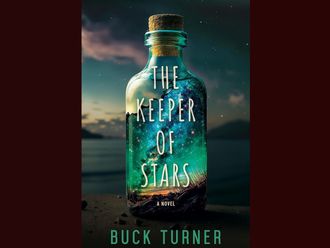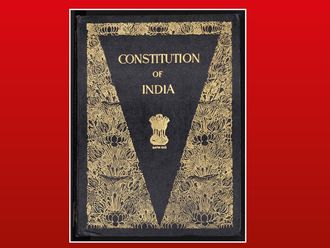Privacy is necessary to human dignity, and every person reasonably expects that privacy will be respected. But privacy is not absolute, and in journalism, as in law, privacy may need to give way to the public interest.
Ramachandra Babu/©Gulf News |
This is a familiar and serviceable approach, but often a blunt one. It is possible to try to calibrate editorial judgments more finely.
Categories of the public interest have received attention. Codes tend to list public interest considerations such as exposing crime or miscarriages of justice, protecting public health, preventing the public from being misled, and raising or contributing to a matter of public debate.
Less attention has been paid to developing a taxonomy of fame. Privacy belongs to people (not corporations or governments), and some people are famous or, in the language of journalism, newsworthy.
Some trade privacy for the benefits that publicity can bring, and fame follows. As Bob Dylan observed in his memoir Chronicles, “privacy is something you can sell, but you can’t buy it back”.
Not everyone who becomes newsworthy trades, and in deciding how much privacy anyone’s fame reasonably costs, it can be useful to ask what type of fame the person enjoys/endures.
The type of fame, considered in combination with whatever public interest factors may be relevant in the particular circumstances, can help in making decisions about the degree of justifiable intrusion.
My conclusion, after years of seeing court judgments and journalism ethics cases about privacy in several jurisdictions, is that the category of fame into which the claimant fits can be a factor — often unarticulated — in the outcome, whether they win or lose.
Broadly, there are five categories of fame:
• Fame by election or appointment: Politicians, judges and others in public office trade some privacy for a share — usually temporarily held — of power that derives from the public. Accountability can justify some privacy loss.
• Fame by achievement: This comes to film, TV and music stars, sporting champions and others who lead big organisations or make transformative contributions in their fields.
• Fame by association: People associated with those who are famous (or infamous) — the spouses, children, parents, siblings — have reflected fame, but not always glory. Invasions of their privacy ordinarily need careful justification. The spouse of a politician is not synonymous with the politician, but it may be necessary to disclose the share dealings of the spouse when the companies are relevant to the politician’s public role.
• Fame by chance: This happens to previously anonymous people randomly caught in tragedy or disaster or, less often, good fortune. Initially at least, they do not trade privacy, but rather have it taken from them by a chance event that at the same time is usually traumatic. They have no preparation for being in the public eye, and often they have one of the most powerful motives to retreat into the seclusion which is one aspect of why we humans value privacy: to restore ourselves when damaged, to grieve.
• Royal fame is unique: How to decide where to draw a line between the public and the private in the lives of those who are born into, or marry into, royalty? Since the mid-20th century at least, they exist to be in the media. As early as 1955 the British Press Council identified the issue. When the Queen’s press officer argued that “the Queen is entitled to expect that her family will attain the privacy at home which all other families are entitled to enjoy”, the council wondered if that was realistic because “everything that touches the crown is of public interest, and there can be little escape from ‘that fierce light that beats upon a throne’.” (Tennyson’s preceding line is ‘Before a thousand peering littlenesses ...’)
There were limits, yes, but where?
For those in other categories of fame, what makes them famous tends to be only one aspect of their lives: they appear in big-budget movies, they play tennis better than anyone in the world, they are elected to govern, their child is missing, their brother is a serial killer, a president once sexually harassed them.
A judge caught this point beautifully when the fashion model Naomi Campbell sued for breach of privacy following press publication of a photograph of her in the street outside the venue where she was attending Narcotics Anonymous meetings. Lady Hale wrote: “If this had been, and had been presented as, a picture of Naomi Campbell going about her business in a public street, there could have been no complaint. She makes a substantial part of her living out of being photographed looking stunning in designer clothing. Readers will obviously be interested to see how she looks if and when she pops out to the shop for a bottle of milk. There is nothing essentially private about that information nor can it be expected to damage her private life. It may not be a high order of freedom of speech, but there is nothing to justify interfering with it.”
Acknowledging that it was in the public interest to disclose that Campbell had lied about her addiction, the court nevertheless found 3-2 for Campbell. In effect, the majority included in her zone of privacy the details of where and how she was dealing with her drug problem. That was the zone the newspaper was penalised for invading. Her therapy was an aspect of her life that was not related to her work as a model. It was her work, her achievement, as a model that was the reason for her fame, her newsworthiness, and she could have no complaint about a photo of how she looked when she went out shopping.
Royals are marketed as exemplars, symbols — from birth, into school, university, military and other activities routinely and willingly publicised; on through engagement, marriage, perhaps divorce; parenting on into grandparenting; and funeral rites too. If a life is designed for public consumption, it gets consumed.
Life episodes for which most people, including people in other categories of fame, reasonably expect privacy may be episodes in which royal fame dooms a person to considerable exposure.
These categories are rarely neat, but trying to use them - and being willing later to explain how, if called to account — can contribute to the legitimacy of decisions editors make about the privacy of others.
— Guardian News & Media Ltd
Paul Chadwick is the Guardian’s fourth readers’ editor.








